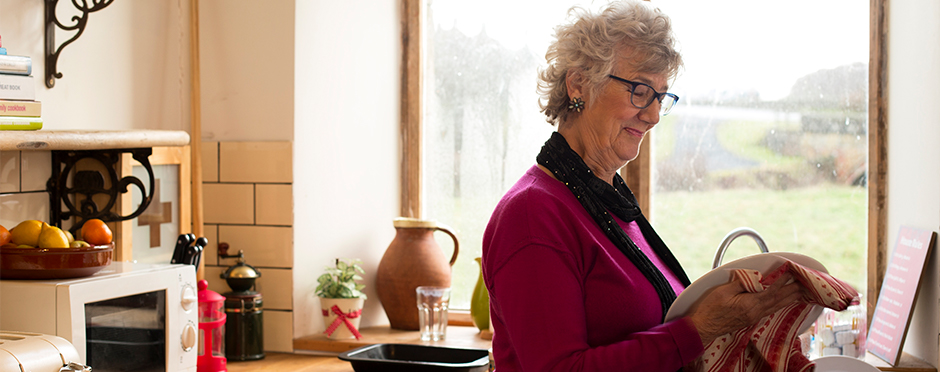
3 Ways to Avoid Overuse Injuries in the Kitchen
Leave a CommentCooking can be a great, stress relieving activity. Over time, however, it can lead to overuse injuries if proper body mechanics are not used, including Carpal Tunnel Syndrome.
Carpal Tunnel Syndrome (CTS) is a compression of the median nerve in the wrist. It can cause wrist and hand pain, especially at night, as well as numbness and tingling in fingers. The numbness and tingling typically occurs in the thumb, index, middle and part of the ring finger. Other symptoms can include weakness and “clumsiness” of the hand. Fortunately, there are some things that can be done when working in the kitchen to help prevent the development of CTS.
1. Avoid repetitive wrist motion. Repetitive flexion and extension of the wrist can lead to friction and strain of the median nerve.2 Ideally, those who are working in the kitchen should maintain a straight or neutral wrist. This can be done by using proper equipment, like a knife with an ergonomically angled handle. Wrists braces are also an option if it is too difficult to avoid repetitive wrist flexion and extension. It is important that the brace fits well, restricts wrist motion and allows the fingers to move freely. Occupational therapists (OTs) can also fabricate a custom orthosis to ensure a good fit.
2. Avoid mechanical stress at the palm. When working at the counter top, it is best to float wrists in the air rather than resting them on a surface. Rolling pins should also be used instead of palms to pound out dough. Any cooking tools being used should not push into the palm or wrist. In other words, any pressure on the wrist and palm should be avoided.
3. Avoid repetitive and forceful gripping and pinching. It has been found that using a sustained or forceful repetitive pinch can increase chances of CTS.2 Therefore, use of adaptive equipment for opening bottles and jars is recommended. Also, using tools like knives, can openers and vegetable peelers with built up handles can decrease the amount of force needed to grip and pinch.
Take Action
Anyone who starts noticing symptoms related to CTS should make an appointment to see their primary physician or orthopedist. There are a variety of tests that can be done to diagnose CTS. It is also important to keep in mind that if CTS is diagnosed, research shows that seeing an OT may be beneficial through use of modalities, exercise, splinting and manual therapy.3
Schedule a free assessment at your nearest Athletico if you are experiencing aches or pains. Free Assessments are available in-clinic and virtually through our Telehealth platform.
The Athletico blog is an educational resource written by Athletico employees. Athletico bloggers are licensed professionals who abide by the code of ethics outlined by their respective professional associations. The content published in blog posts represents the opinion of the individual author based on their expertise and experience. The content provided in this blog is for informational purposes only, does not constitute medical advice and should not be relied on for making personal health decisions.
References:
1. Government of Canada, Canadian Centre for Occupational Health and Safety. “Carpal Tunnel Syndrome : OSH Answers.” Government of Canada, Canadian Centre for Occupational Health and Safety. N.p., 02 Dec. 2014. Web. 02 Mar. 2017.
2. Keir, Peter J., and David M. Rempel. “Pathomechanics of Peripheral Nerve Loading.” Journal of Hand Therapy 18.2 (2005): 259-69.
3. Muller, Monique, Deborah Tsui, Ronda Schnurr, Lori Biddulph-Deisroth, Julie Hard, and Joy C. Macdermid. “Effectiveness of Hand Therapy Interventions in Primary Management of Carpal Tunnel Syndrome: A Systematic Review.” Journal of Hand Therapy 17.2 (2004): 210-28.
